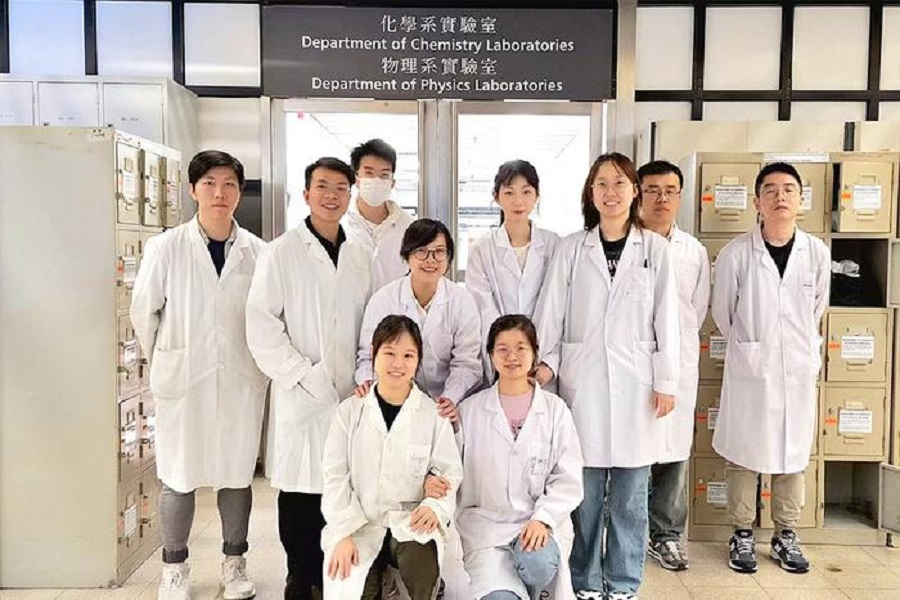
Researchers from City University of Hong Kong (CityUHK) on Sunday said they have discovered a new vortex electric field with the potential to enhance future electronic, magnetic and optical devices.
The research, published in Science, is highly valuable as it can upgrade the operation of many devices, including strengthening memory stability and computing speed.
With further research, the discovery of the vortex electric field can even later impact the fields of quantum computing, spintronics, and nanotechnology.
“Previously, generating a vortex electric field required expensive thin film deposition techniques and complex procedures. However, our research has demonstrated that a simple twist in bilayer 2D materials can easily induce this vortex electric field,” said Professor Ly Thuc Hue of the Department of Chemistry.
To achieve a clean interface, researchers typically synthesised bilayers directly.
However, it is challenging to maintain freedom in twisting angles, particularly for low-angle twists.
Professor Ly’s team invented the innovative ice-assisted transfer technique, which she explains has been crucial for achieving a clean interface between bilayers, allowing them to manipulate and create twisted bilayers freely.
Unlike previous studies that focused on twist angles smaller than 3 degrees, the team’s technique allowed them to create a broad spectrum of twist angles ranging from 0 to 60 degrees, by leveraging both synthesis and artificial stacking through ice-assisted transfer.
The groundbreaking discovery of the new vortex electric field in the twisted bilayer has also created a 2D quasicrystal, potentially enhancing future electronic, magnetic and optical devices.
According to Professor Ly, these structures can have a versatile range of applications as the vortex electric field generated differs depending on the angle of the twist.
The next steps for their study will focus on manipulating the material further, such as testing if stacking more layers is possible, or to see if the same effect can be generated from other materials.
Having patented their ice-assisted transfer technique, the team looks forward to seeing if other discoveries can be generated globally with the help of their technique now that it is possible to achieve clean bilayer interfaces without extensive and expensive procedures.
Researchers from City University of Hong Kong (CityUHK) on Sunday said they have discovered a new vortex electric field with the potential to enhance future electronic, magnetic and optical devices.
The research, published in Science, is highly valuable as it can upgrade the operation of many devices, including strengthening memory stability and computing speed.
With further research, the discovery of the vortex electric field can even later impact the fields of quantum computing, spintronics, and nanotechnology.
“Previously, generating a vortex electric field required expensive thin film deposition techniques and complex procedures. However, our research has demonstrated that a simple twist in bilayer 2D materials can easily induce this vortex electric field,” said Professor Ly Thuc Hue of the Department of Chemistry.
To achieve a clean interface, researchers typically synthesised bilayers directly.
However, it is challenging to maintain freedom in twisting angles, particularly for low-angle twists.
Professor Ly’s team invented the innovative ice-assisted transfer technique, which she explains has been crucial for achieving a clean interface between bilayers, allowing them to manipulate and create twisted bilayers freely.
Unlike previous studies that focused on twist angles smaller than 3 degrees, the team’s technique allowed them to create a broad spectrum of twist angles ranging from 0 to 60 degrees, by leveraging both synthesis and artificial stacking through ice-assisted transfer.
The groundbreaking discovery of the new vortex electric field in the twisted bilayer has also created a 2D quasicrystal, potentially enhancing future electronic, magnetic and optical devices.
According to Professor Ly, these structures can have a versatile range of applications as the vortex electric field generated differs depending on the angle of the twist.
The next steps for their study will focus on manipulating the material further, such as testing if stacking more layers is possible, or to see if the same effect can be generated from other materials.
Having patented their ice-assisted transfer technique, the team looks forward to seeing if other discoveries can be generated globally with the help of their technique now that it is possible to achieve clean bilayer interfaces without extensive and expensive procedures.
